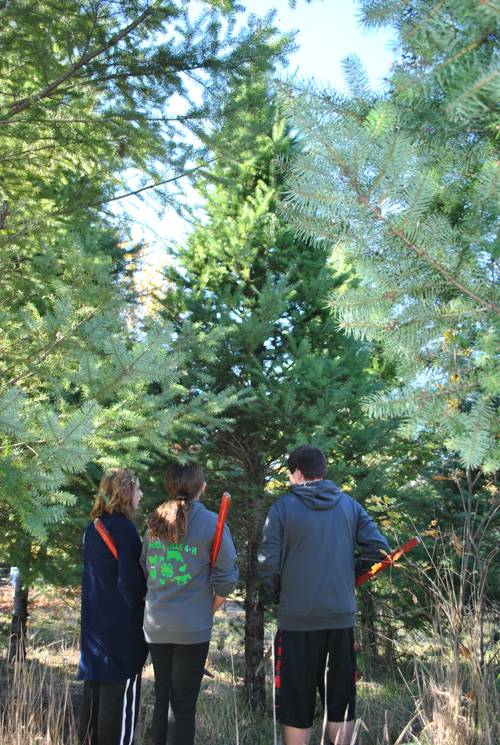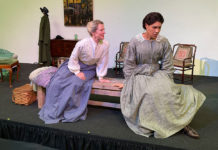
Students learn why the ‘fluffiest’ tree may not be the best
Even in today’s busy, high-tech world, where precut Christmas tree lots are as abundant as the chain stores that make way for them, there is still something magical about “the hunt,” which can only be fully experienced at a choose-and-cut tree farm.
After all, where else can the average person take in pine-scented fresh air while tromping through forested acreage while debating with others in the group about which is the best Christmas tree? Then, once the group finds one they can agree on, they undergo the traditional act of cutting down their soon-to-be holiday centerpiece.
This was just such the scenario played out by a handful of Forest-ville Academy students on a recent outing to the Graton Fire Christmas Tree Farm with their principal Phyllis Parisi, who is also the Forestville Union School District Superintendent. The group was there to get a Christmas tree to put in the foyer (or front office area) of their school.
But not just any tree.
After going over the safety rules related to carrying the long saws used to cut down trees and reminding the children of the importance of watering their Christmas tree after it’s been cut, Graton Fire Protection District’s tree farm manager Heather O’Dell asked them what kind of Christmas tree they were looking for.
“Do you want fluffy or big?” O’Dell asked.
“Fluffy,” the children said.
But, apparently, “the fluffy ones” don’t hold up as long as some of their counterparts do, once cut.
“The big fluffy one is like the rose (in a bouquet). It must have lots of water or it’s going to look not so nice. There are others, like the ones from Oregon and some from here that last a really, really long time,” O’Dell told her young audience.
“Douglas fir is the rose,” she said, clarifying the fluffy tree. “It is the one that looks good, smells good and fades first,” she said, noting, potential Christmas trees that are grown in this area that last longer than the Douglas fir include Sequoia redwoods, Scotch pine, Blue spruce, and White spruce, for example. Long-lasting trees that come from Oregon include the Noble, Nord-mann and Fraser firs.
O’Dell also took a moment before heading out with the troop to give them a brief speech on sustainability and why it’s actually good to harvest the older trees and make way for the newer ones which produce more oxygen. Each tree, while living, provides enough oxygen for 18 people, she said. But when the tree gets really tall and old, it doesn’t put out as much oxygen and it actually starts using oxygen, she said.
In other words, O’Dell said, “I prefer you cut. I would like you to harvest trees so I can continue to plant new ones.”
And then it was time to get down to business.
“We are looking for a tree about as tall as Heather,” Parisi told her students before they headed into the thicket. While her exact height was not mentioned, Parisi’s statement was translated into a “a tree under eight feet tall.”
Seventh-grader Cody Brooke said he wanted something “that is a darker color.” Then, standing before a tree at least 14 feet tall, he said, “I like this one. It’s perfect if we cut it up higher.”
“And it’s fluffy toward the top,” eighth-grader Faith Proaps said.
‘No deal’ was the message from O’Dell, who didn’t want to destroy a perfectly good tree by cutting several feet off the bottom of its trunk.
“The hunt is on,” Parisi said, as they continued their journey, which was nearing its end. Soon after, they came upon the perfect Christmas tree; and Proaps, Brooke and sixth-grader Kendra Foster all took turns cutting it down.
“And what do you say when a tree starts to fall?” O’Dell asked.
“Timber!” came a collective shout.
“Heigh-ho,” Parisi said, as they all held onto the tree and lugged their prize toward the front of the lot.
The Graton Fire Protection District purchased the Del Davis Christmas Tree Farm in 2006 as the site for its new fire station. Six acres of the nine-acre parcel is planted in trees. All proceeds from the Christmas tree farm support the fire department.







